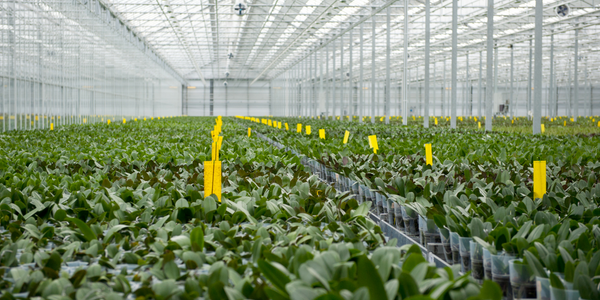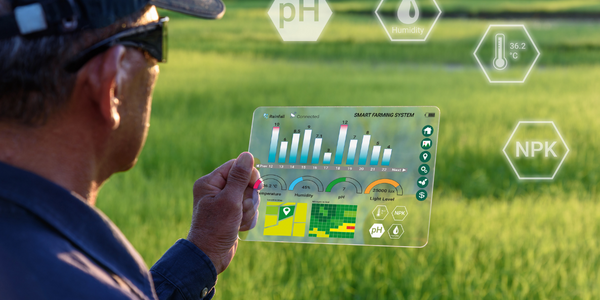Download PDF
Chinese Academy of Agricultural Sciences builds big data applications for smart agriculture with Qlik
Technology Category
- Analytics & Modeling - Big Data Analytics
Applicable Industries
- Agriculture
Applicable Functions
- Product Research & Development
Use Cases
- Predictive Maintenance
- Farm Monitoring & Precision Farming
Services
- Data Science Services
The Challenge
The Chinese Academy of Agricultural Sciences (CAAS) is a national innovation center for agricultural IT. It monitors agricultural information, risk analysis, food safety, and data acquisition. CAAS is in the process of refining big data for smart agriculture through its own application. The application handles heterogeneous data resources from a variety of data sources including local governments, commercial databases, and Internet of Things (IoT). However, the business intelligence (BI) products previously deployed by CAAS were seen as inadequate. They were generally limited to static data analysis and visualized representation, making it difficult to fulfill in-depth data interaction and analysis. CAAS wanted more specialized and powerful functionality. With such a huge volume of data, CAAS was concerned about performance load.
About The Customer
The Chinese Academy of Agricultural Sciences (CAAS) is the largest employer of scientific talent in agricultural science and technology in China, with over 5,000 professional employees. The Agricultural Information Institute of CAAS is a national innovation center for agricultural IT. It monitors agricultural information, risk analysis, food safety, and data acquisition. The institute is dedicated to promoting the development of smart agriculture, which can cut costs and boost efficiency and quality in the development of agriculture and rural areas. CAAS is in the process of refining big data for smart agriculture through its own application.
The Solution
CAAS selected Qlik after an appraisal of BI options from multiple vendors. Qlik Sense, seen by CAAS as a benchmark for the new generation visual analysis platform, helps users make better decisions based on the solution’s unique association analysis engine, advanced AI and a scalable multi-cloud architecture. Qlik Sense supports in-memory computing, demonstrates outstanding performance and enables quick calculation and representation of mass data. It provides a strong data management function which supports administrative applications. The scalability of Qlik Sense enables users to perform any analysis via an open API development package and bring them into other applications through its embedded analysis support.
Operational Impact
Quantitative Benefit
Related Case Studies.

Case Study
Intelligent Farming with ThingWorx Analytics
Z Farms was facing three challenges: costly irrigation systems with water as a limited resource, narrow optimal ranges of soil moisture for growth with difficult maintenance and farm operators could not simply turn on irrigation systems like a faucet.

Case Study
Greenhouse Intelligent Monitoring and Control Solution
Farming Orchids is the most successful form of precision farming in Taiwan, and also the most exported flower. Orchids need a specific temperature and humidity conditions to grow and bloom, and its flowering time may not be in line with market demands, so the price collapses when there is overproduction. Therefore, some farmers began to import automated greenhouse control systems for breeding and forcing, which not only improves quality, but also effectively controls the production period and yield to ensure revenue. In 2012, an orchid farmer built a Forcing Greenhouse of about 200 pings (approximately 661 Square Meters) in Tainan, Taiwan. The system integrator adopted Advantech’s APAX-5000 series programmable automation controllers to build the control platform, coupled with Advantech WebAccess HMI/SCADA software, to achieve cloud monitoring. The staff of the orchid field can monitor important data anytime via smart phone, iPad, and other handheld devices, and control the growth and flowering conditions. System requirements: In the past, most environmental control systems of orchid greenhouses in Taiwan used PLCs (Programmable Logic Controller) with poorscalability and control, and could not be connected to the Internet formonitoring from the cloud. For advanced database analysis and networking capability, the PC platform must be adopted. Therefore, PAC Systems (Programmable Automation Controller) with both PLC programming capabilities andPC functions is a better choice.The environmental control of the Orchid greenhouse switches on and off devices like fan, shade net, cooling/heat pump, liquid flow control, water-cooling wall etc. It is controlled by a control panel of electric controllers, and is driven by a motor, to adjust the greenhouse temperature, humidity, and other environmental conditions to the set parameters.

Case Study
Enabling Internet of Things Innovation in Agriculture
DigiBale, wanted to apply technology know-how and IP from implementations successfully to more agriculture sectors including cotton, forestry, sugarcane and cattle. However, farmers and growers still have worries about the connected technology.

Case Study
Precision beekeeping with wireless temperature monitoring
Honeybees are insects of large economic value and provide a vital service to agriculture by pollinating a variety of crops. In addition, bees provide us with valuable products such as honey, beeswax, propolis, bee venom, etc. Monitoring of honeybee colony health, population, productivity, and environmental conditions affecting the colony health have always been exceedingly difficult tasks in apiculture. Research has shown that even small deviations (by more than 2°C) from the optimal temperatures have a significant influence on the development of the brood and the health of adult bees.







